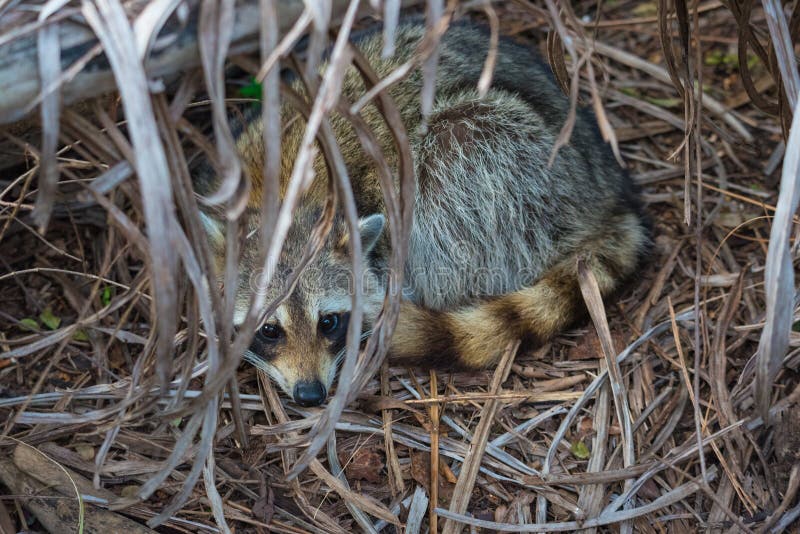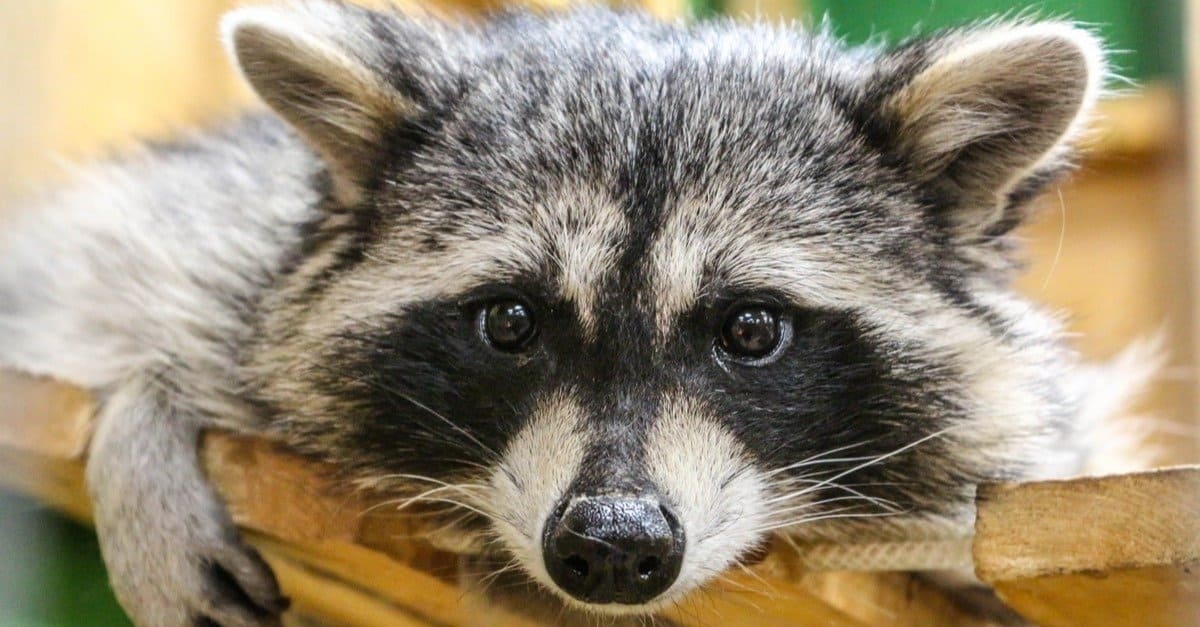When it comes to understanding the nocturnal habits of raccoons, one question often arises: where does a raccoon sleep? These clever creatures have mastered the art of finding safe and cozy resting spots. Raccoons are highly adaptable and can thrive in various environments, from urban settings to dense forests. Their sleeping arrangements vary depending on factors like habitat availability, season, and safety. In this article, we will delve into the intricacies of raccoon sleeping habits, exploring everything from their preferred dens to how they adapt to different surroundings.
As curious creatures, raccoons have developed unique strategies to ensure their rest is undisturbed. Whether it's a hollow tree, an abandoned burrow, or even a suburban attic, these animals prioritize security and comfort. Understanding their sleeping patterns not only sheds light on their behavior but also helps humans coexist peacefully with them. In the following sections, we will uncover the fascinating world of raccoon sleep and address common questions that arise about their resting habits.
From their choice of den sites to the challenges they face in urban environments, this article aims to provide a comprehensive overview. By exploring the nuances of raccoon sleep, we hope to offer valuable insights for wildlife enthusiasts and those seeking to manage raccoon populations responsibly. So, let's dive into the world of raccoons and discover the answer to the question: where does a raccoon sleep?
Read also:Understanding The Va Taxation Department A Comprehensive Guide
Where Does a Raccoon Sleep During the Day?
Understanding the daytime sleeping habits of raccoons is crucial for comprehending their behavior. These creatures are primarily nocturnal, meaning they are most active during the night. During the day, raccoons retreat to safe and secluded areas to rest. These areas can include hollow trees, rock crevices, and even man-made structures like attics or sheds. The choice of location depends on factors such as availability, protection from predators, and proximity to food sources.
Raccoons are known for their adaptability, which allows them to thrive in diverse environments. In urban areas, they often seek out abandoned buildings or crawl spaces, while in rural settings, they may prefer natural dens like caves or dense vegetation. This flexibility ensures that raccoons can find suitable resting spots regardless of their surroundings. By studying their daytime sleeping patterns, we can better understand how they interact with their environment.
What Factors Influence Where Does a Raccoon Sleep?
Several factors influence the choice of sleeping location for raccoons. Safety is a primary concern, as these animals need to protect themselves from predators and environmental hazards. Proximity to food and water sources also plays a significant role, as raccoons prefer to minimize the distance between their den and feeding areas. Additionally, the climate and season can impact their decision-making process, with raccoons seeking warmer, more insulated locations during colder months.
Here is a list of factors that influence raccoon sleep locations:
- Safety from predators
- Proximity to food and water
- Climate and seasonal changes
- Availability of natural or man-made structures
Why Do Raccoons Prefer Hollow Trees?
Hollow trees are a popular choice for raccoons when it comes to resting spots. These natural structures provide excellent protection from predators and harsh weather conditions. The enclosed space offers insulation, keeping the raccoon warm during colder months and cool during the summer. Additionally, hollow trees often have narrow openings that prevent larger predators from entering, making them an ideal choice for raccoon dens.
Where Does a Raccoon Sleep in Urban Areas?
In urban environments, raccoons face unique challenges when it comes to finding suitable sleeping locations. The abundance of human-made structures provides numerous opportunities for these adaptable creatures. They may choose to rest in attics, basements, or abandoned buildings, taking advantage of the shelter these spaces offer. However, this proximity to humans can lead to conflicts, as raccoons may cause damage to property or become a nuisance.
Read also:Unveiling The Secrets Of R6 Darkzero A Comprehensive Guide
How Do Raccoons Adapt to Urban Living?
Raccoons have shown remarkable adaptability in urban settings. They have learned to navigate human environments, finding food in garbage bins and shelter in man-made structures. This adaptability allows them to thrive even in densely populated areas. However, it also raises concerns about human-wildlife interactions and the potential for conflict. Understanding how raccoons adapt to urban living is essential for promoting peaceful coexistence between humans and wildlife.
What Are the Challenges for Raccoons in Urban Settings?
Despite their adaptability, raccoons face several challenges in urban environments. These include competition for resources, exposure to pollutants, and the risk of encountering hostile humans or pets. Additionally, urban raccoons must navigate complex landscapes filled with vehicles, buildings, and other obstacles. Addressing these challenges requires a combination of wildlife management strategies and public education efforts.
Where Does a Raccoon Sleep in the Wild?
In their natural habitats, raccoons rely on a variety of den sites to ensure their safety and comfort. These can include hollow trees, rock crevices, and dense vegetation. The choice of location depends on factors such as availability, protection from predators, and proximity to food sources. Wild raccoons often establish multiple den sites, allowing them to move between locations as needed. This strategy helps them avoid detection by predators and ensures access to diverse food sources.
Do Raccoons Sleep Alone or in Groups?
Raccoons are generally solitary animals, preferring to sleep alone or in small family groups. However, during the winter months, they may gather in communal dens to conserve heat and protect against harsh weather conditions. This behavior is more common in colder climates, where the need for warmth outweighs the preference for solitude. Understanding whether raccoons sleep alone or in groups provides insight into their social behavior and survival strategies.
Where Does a Raccoon Sleep During Winter?
Winter poses unique challenges for raccoons, as they must find insulated locations to survive the cold. During this season, they often retreat to dens located in hollow trees, caves, or other protected areas. These dens provide essential warmth and protection from the elements. Raccoons may also enter a state of torpor during particularly cold periods, reducing their metabolic rate to conserve energy. This adaptation allows them to survive until warmer weather returns.
How Do Raccoons Choose Their Sleeping Spots?
Selecting the right sleeping spot is a critical decision for raccoons. They must consider factors such as safety, comfort, and accessibility when choosing a den site. Raccoons are highly observant and use their keen senses to evaluate potential locations. They may test the stability of a structure or check for signs of predators before settling in for the day. This meticulous process ensures that they find the best possible resting spot.
Where Does a Raccoon Sleep in the Summer?
During the summer months, raccoons may opt for lighter, more open sleeping arrangements. These can include dense vegetation, rock piles, or even abandoned nests. The warmer temperatures allow them to forgo the need for heavy insulation, focusing instead on staying cool and comfortable. Summer dens are often located near water sources, providing easy access to hydration and cooling opportunities. By adapting their sleeping habits to the season, raccoons ensure their survival in changing environments.
What Should You Do If You Find a Raccoon Den?
If you encounter a raccoon den, it's important to approach the situation with caution and respect. Raccoons are wild animals and may become defensive if they feel threatened. Avoid disturbing the den, and never attempt to handle or relocate the animals yourself. Instead, contact a local wildlife professional who can provide guidance and assistance. By respecting raccoon habitats, we can help preserve their natural behaviors and promote harmonious coexistence.
Conclusion: The Fascinating World of Raccoon Sleep
In conclusion, the question of where does a raccoon sleep reveals a complex and fascinating world of animal behavior. From their preference for hollow trees to their adaptability in urban environments, raccoons demonstrate remarkable resourcefulness in finding safe and comfortable resting spots. By understanding their sleeping habits, we can better appreciate these intelligent creatures and work towards sustainable solutions for human-wildlife interactions. Whether in the wild or in urban settings, raccoons continue to amaze us with their ability to thrive in diverse environments.
Table of Contents
- Where Does a Raccoon Sleep During the Day?
- What Factors Influence Where Does a Raccoon Sleep?
- Why Do Raccoons Prefer Hollow Trees?
- Where Does a Raccoon Sleep in Urban Areas?
- How Do Raccoons Adapt to Urban Living?
- What Are the Challenges for Raccoons in Urban Settings?
- Where Does a Raccoon Sleep in the Wild?
- Do Raccoons Sleep Alone or in Groups?
- Where Does a Raccoon Sleep During Winter?
- How Do Raccoons Choose Their Sleeping Spots?


